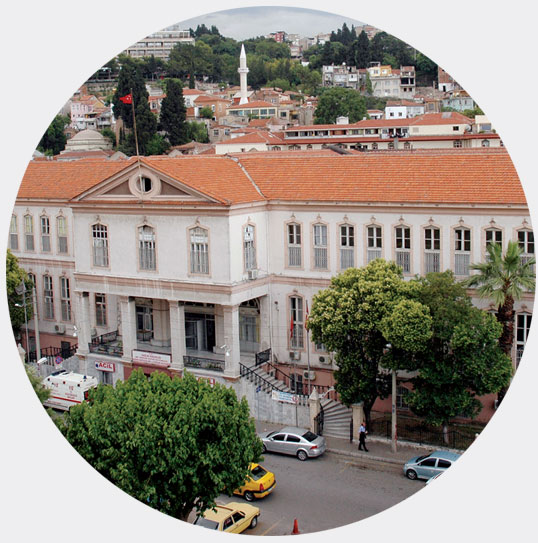
Gurebai Müslimin Hospital (Muslims’ Hospital)
In the beginning of 19th century, the Greek, Jewish, Armenian and other non-Muslim communities of Izmir had their own hospitals, however there was not any health institution of the Muslim community. After the earthquake and the following epidemic in 1849, Emin Muhlis Paşa established the first daruşşifa (hospital) in Izmir. The area on which the hospital stands today was previously a British cemetery. The British Consulate, after moving the dead bodies to their homeland, donated the area to the Turkish community on the condition that a hospital is built. Emin Muhlis Paşa, with the permission of the Sultan, raised donations from the public and had the hospital built in 1851 and named ‘Izmir Gureba-I Muslimin’ (Muslim hospital for the poor).
The hospital, built from stone and wood, had sections for men and women with 62 beds in total, and had initially a surgeon, a pharmacist, a director, a clerk and a janitor serving 6000 patients a year.
The hospital’s budget consisted of several items including 44 liras 98 kuruş and 10 para from the Charity of the Sultan, 226 liras from the weighage of fruits and hay traded in the city, 350 liras from burial services for those who died in the hospital, 54 liras from the Ottoman Bank, 57 liras from the Regie Administration and 13 liras 80 kuruş from the revenues of Ali Paşa marketplace.
In 1913, with the new General Law on Provincial Administration, the name of the hospital was changed as İzmir Memleket Hospital (Territorial Hospital). In 1950 it was taken over by the Ministry of Health and renamed as Izmir State Hospital. By the way, a section of Faculty of Medicine of Ege University operated in this building before it moved to its new location.
The hospital building has been serving as Gynaecology and Obstetrics Hospital since 1985 and was renamed as Dr. Ekrem Hayri Üstündağ Gynaecology and Obstetrics Hospital in 2000.